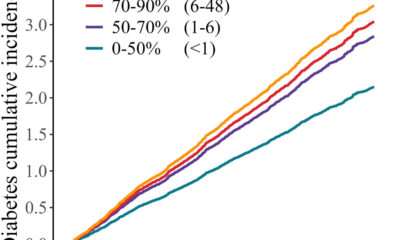Finance
An additional perversion to the $8 limit on late fees

Co-blogger Vance Ginn has nicely laid out some of the perverse, probably unintended, but certainly predictable consequences of the federal government’s proposed $8 limit on the amount credit card companies can charge credit card holders if they are late on payments. .
I want to point out two other consequences, both of which are perverse, but one of which is especially perverse.
But first my personal story. Occasionally, while traveling or very busy, I have missed a payment date and paid the balance on my credit card late. It only happened a few times because the credit card company taught me virtue with a $30 to $35 late fee. Ouch! I became very careful.
Now my point about consequences. If regulations are implemented, as Vance notes, credit card companies will adapt. He mentions a few adjustments.
One thing he doesn’t mention is that, to the extent possible, they will try to figure out ways to charge people who are late. This could be by increasing their interest rate once they have registered x number of delinquencies over y number of months. They could be other adjustments that we don’t know about, but that some of the best minds at the credit card companies will think carefully about.
The advantage of this approach is that it focuses on the higher costs for those causing the problem. These other approaches they could take are probably less efficient than the high late fees, otherwise they would have already taken them.
But what if the credit card companies fail to target the higher charges to those causing the problem? Then we get the kind of adjustments Vance is talking about, like higher interest rates for everyone. This is especially perverse because it leads to people who didn’t cause the problem paying more.
Another point that doesn’t relate to credit card fees, but does relate to usury laws.
Shortly after moving to the United States in the fall of 1972, I applied for a Visa credit card with a credit limit of – are you ready? – $250. That was the lowest amount you could request. I was rejected. I suspect the reasons were twofold: (1) I was not a permanent resident of the US, so the company may have been concerned about collection issues if I didn’t pay and returned to Canada; and (2) I had no credit history – no car loans, no loans of any kind.
I thought living in the United States longer would help. So in 1974 I applied for a Mastercard with a $400 limit, the lowest Mastercard allowed. I was rejected.
In 1975 I finally got a credit card. I think I know the reason: the change in usury laws. When credit card companies issued cards in a state, they were subject to that state’s usury laws. If I remember correctly, the interest rate cap in California at the time was 11%. That wouldn’t be a good rate, from a credit card company’s perspective, for an unknown risk that could easily leave the United States. But a 1975 federal court ruling established that credit card companies could charge an interest rate consistent with the usury laws of the state in which the credit company was located. So some of them were in South Dakota and other states that had no caps on interest rates. Finally I got a high interest card. And I rarely had to pay it because I made it a point, except in extreme circumstances, to pay off the entire balance every month.
We often hear about the absurdly high interest rates that credit card companies charge young people with no credit history. But they simply adapt to the risk. I would have rather had a credit card that charged 24% interest in 1972 than no card in 1972.











